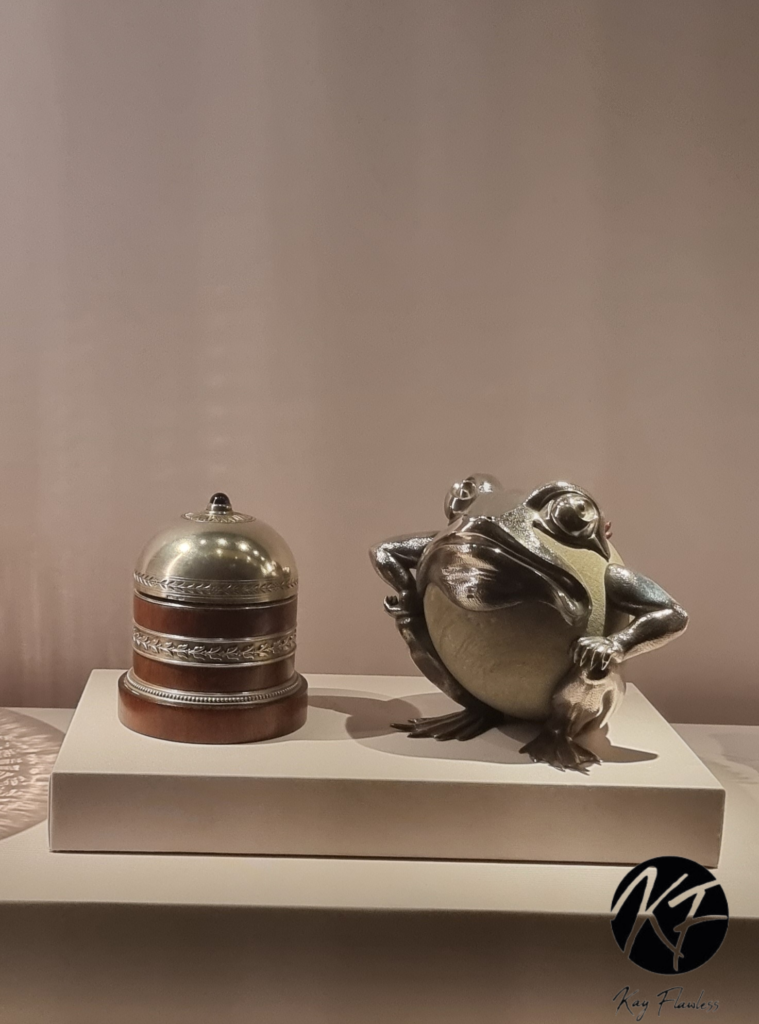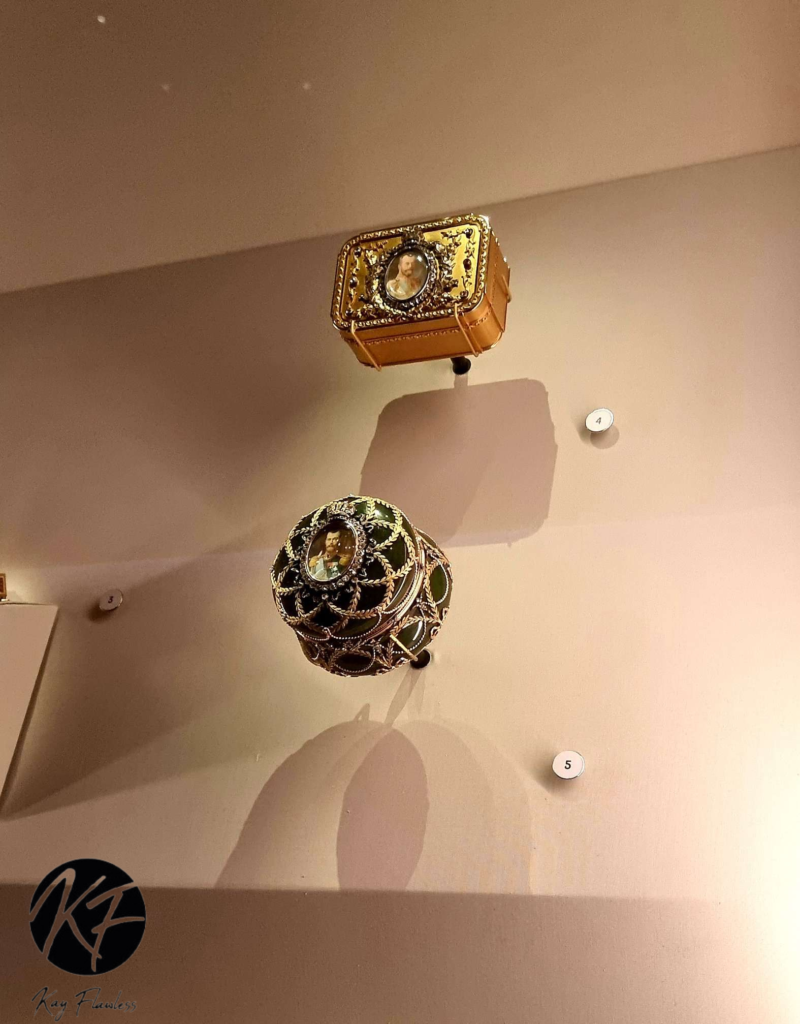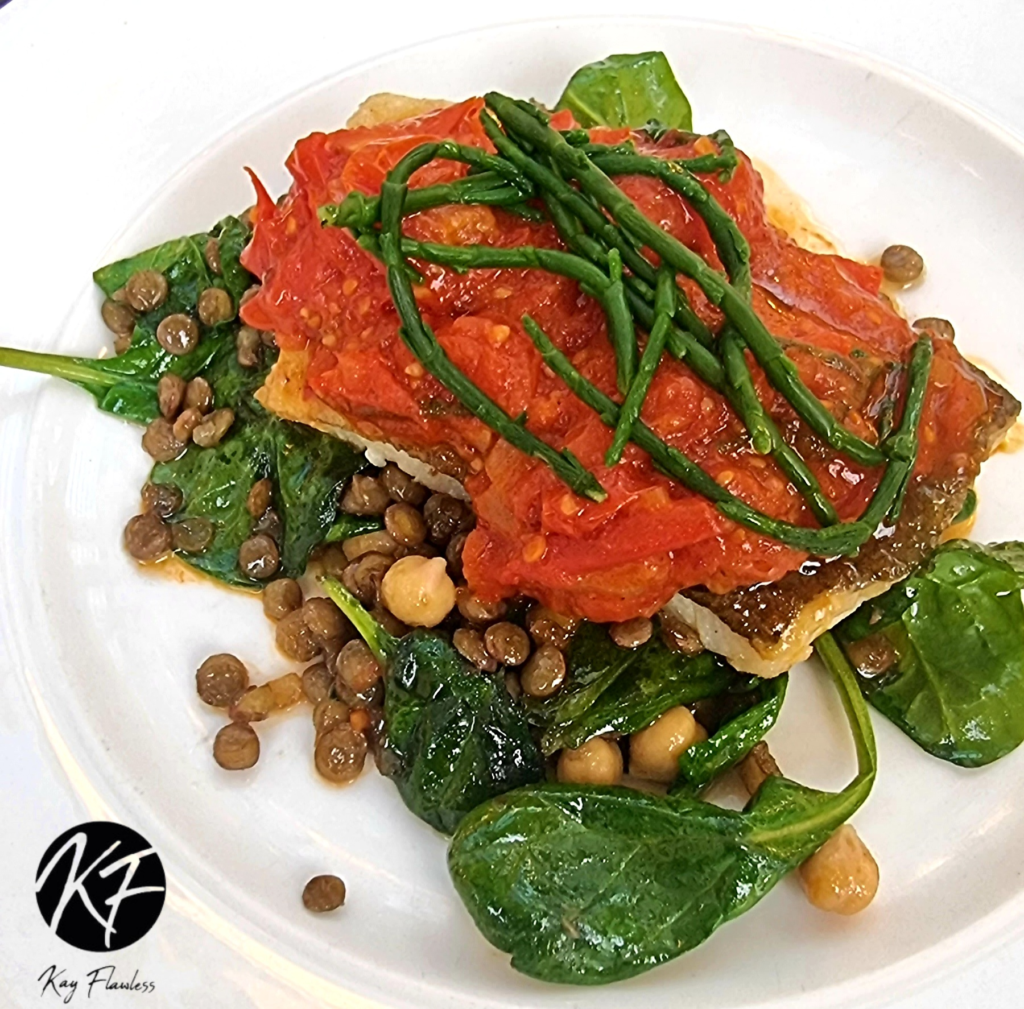Fabergé is known for its elaborate encrusted easter eggs that were dearly loved by royals, most specifically the Russian and British monarchy. To this day, there are only 60 Fabergé eggs in the world which is one of the reasons why the name is so renowned.
Last week, I had the chance to visit the V&A’s current exhibition Fabergé in London: Romance to Revolution where they gave us a glimpse into the world of Fabergé and the establishment.
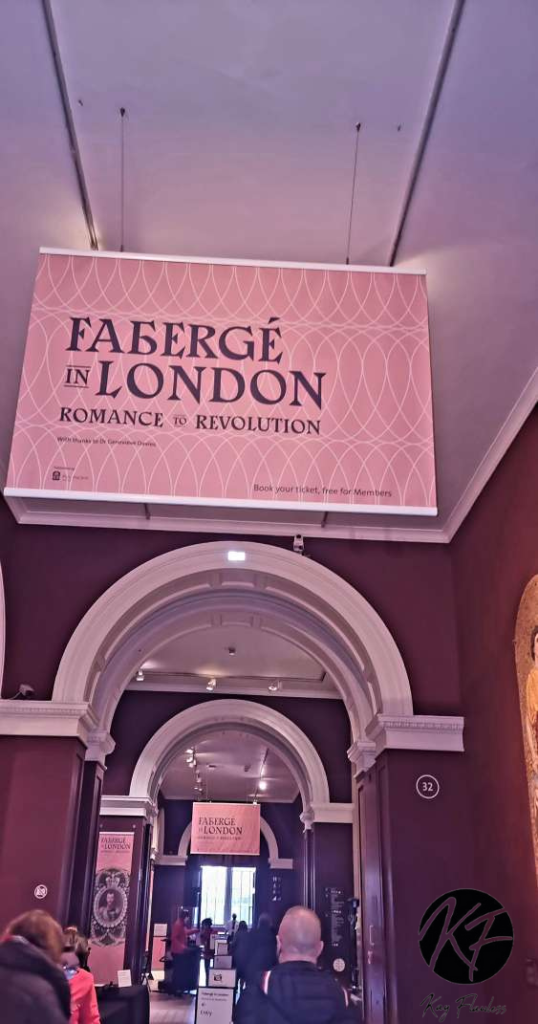

Founded in 1842 by baltic german Gustav Fabergé, The House of Fabergé was established in St Petersburg, Russia, when Gustav decided to open up his own jewellery shop in a basement of one of the main streets in Russia.
When Gustav retired, he left the realm in the hands of his son, Peter Carl Fabergé, where he continued the journey that led to Fabergé being notorious for its flamboyant eggs that are lined with precious metals, gems and jewels.
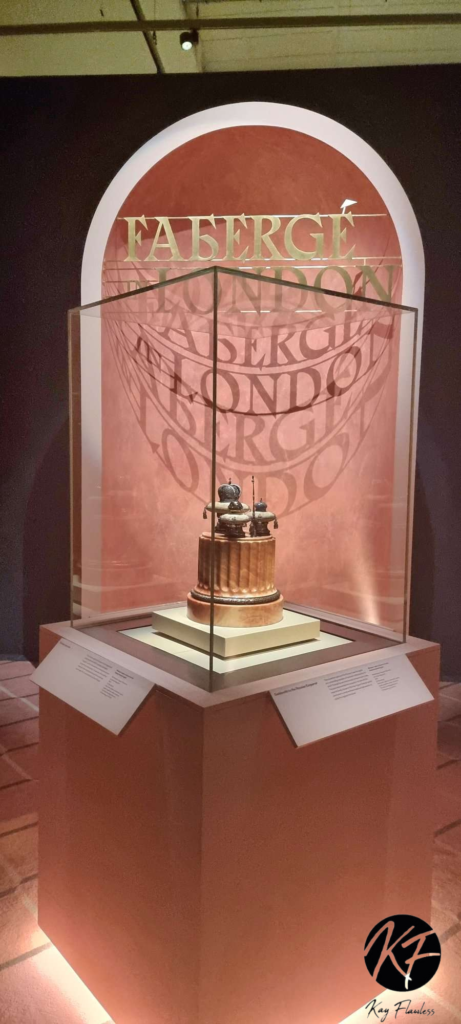
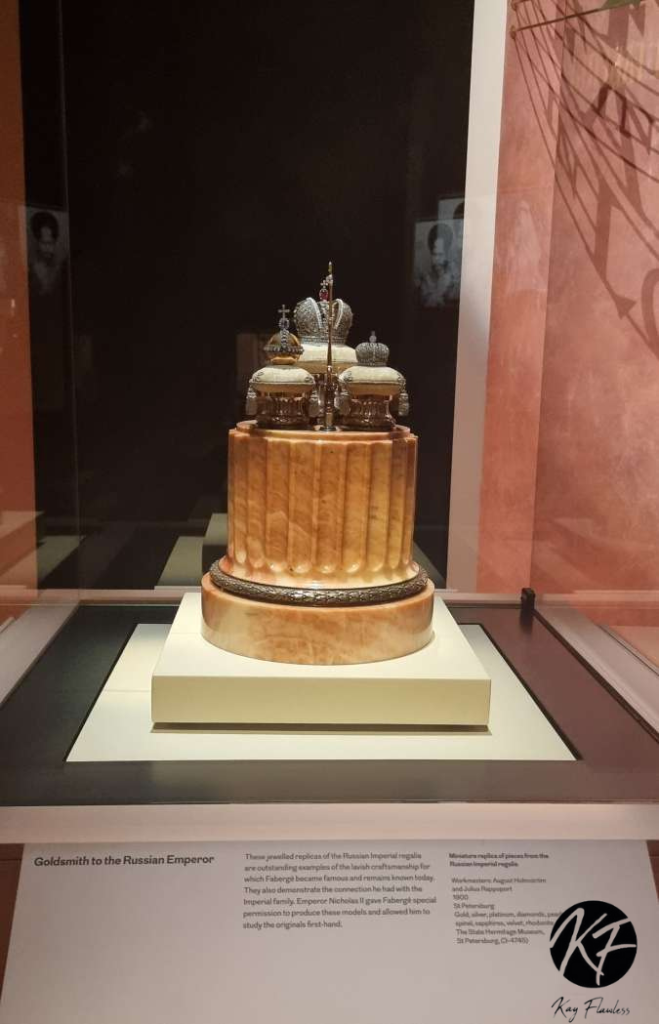
After the Russian monarchy grew fond of Fabergé’s work, it began to swiftly rise to fame when it was first noticed by the British royal family. King Edward V and Queen Mary were one of many who became attached to the elaborate work of Fabergé.
Not long before World War I, Fabergé opened its first shop in London on Dover Street that became a cherished spot of many royalists and business people. Fabergé’s exquisite works became the talk of the town and everyone wanted to get their hands on the pieces.
A rare piece, the match striker has a sandstone body mounted in silver and is formed as an anthropoid toad. The matches are held within a chamber at the back of the toad and can be lit by striking it against his sandstone body.
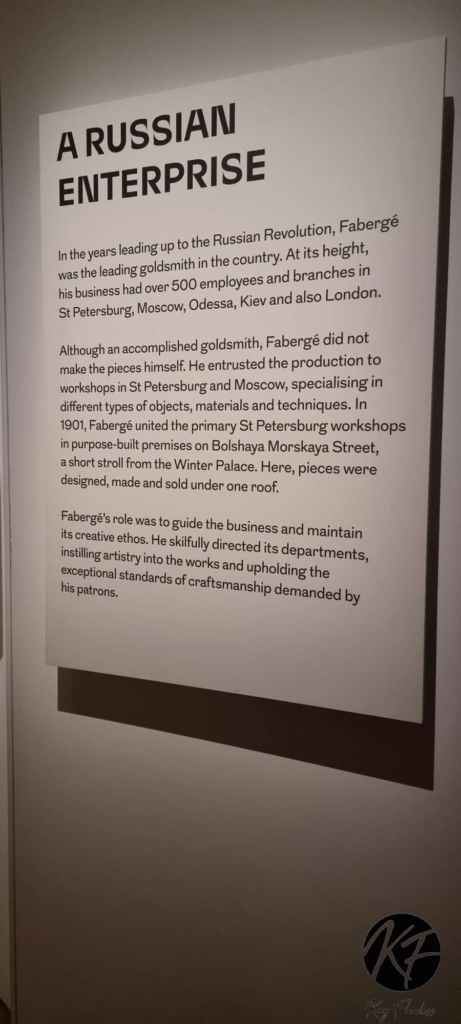
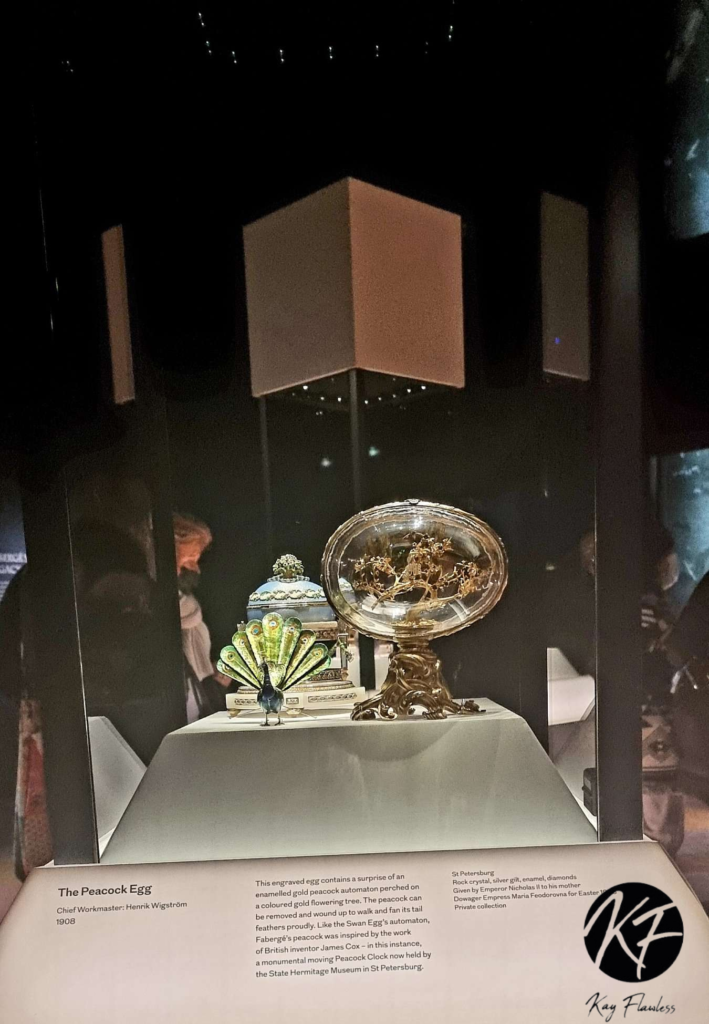
The backstory behind the Peacock egg is remarkable. It was made for Tsar Nicolas II of Russia who then, gave it to his mother. The Peacock egg is a transparent egg, made with rock crystal and inside is embellished with a golden tree and a multi-colour peacock that can moves it head and feathers. Amongst the tree, there are various precious gemstones scattered. This piece is known to be one of the world’s most famous Fabergé eggs still in existence and carries a miraculous past with it.
This snuffbox had been created and gifted to Count Antoli Orlov-Davydov for his huge donations to charity right after the start of the Russo-Japanese war. Count Antoli had donated 1 million roubles for the Red Cross and another million to the Russian navy for building a warship. This was awarded to him by Empress consort of Russia, Alexandra Feodorovna, who was devoted to the Russian Red Cross and gave this box as a grant to his efforts of generosity.
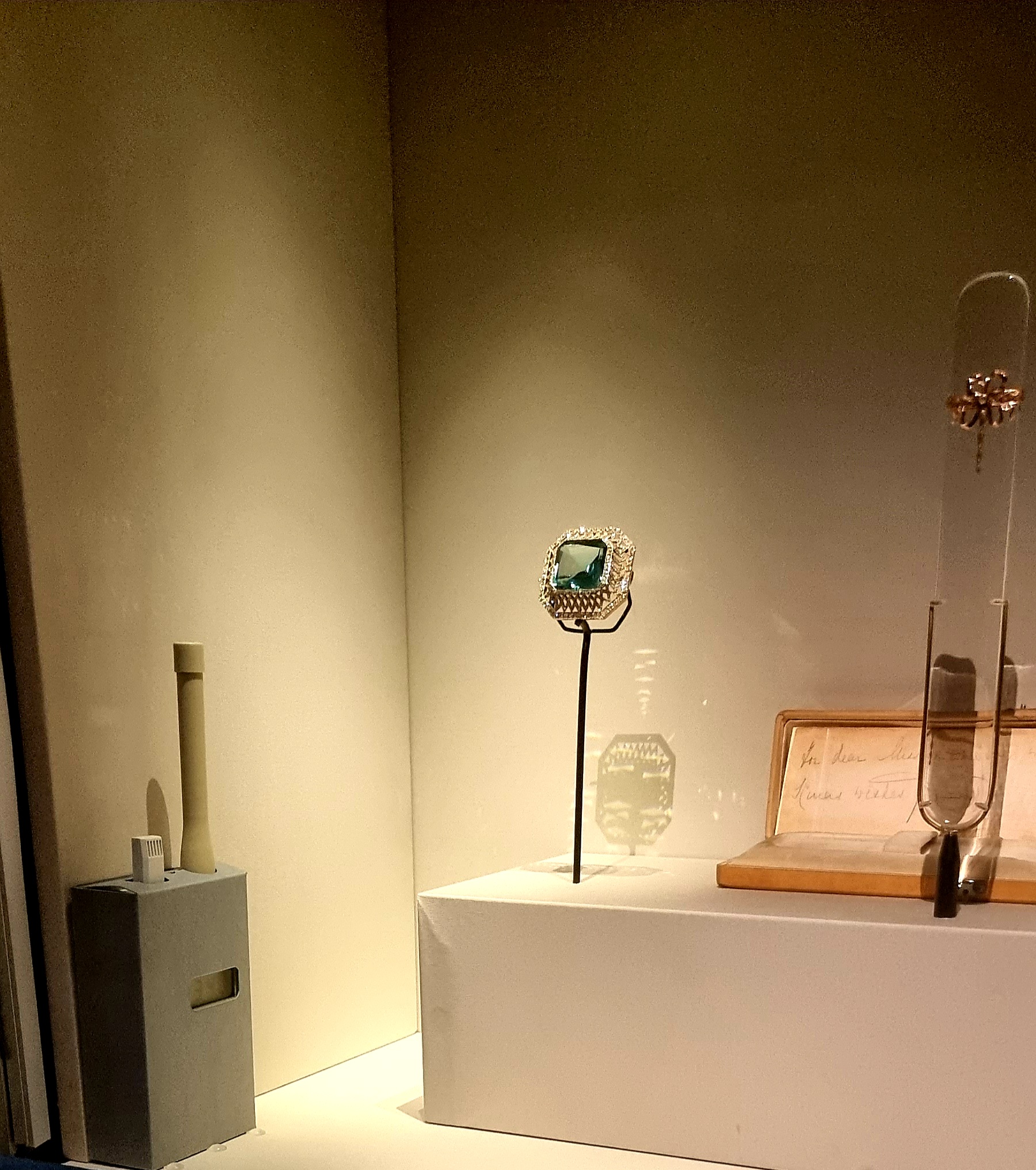
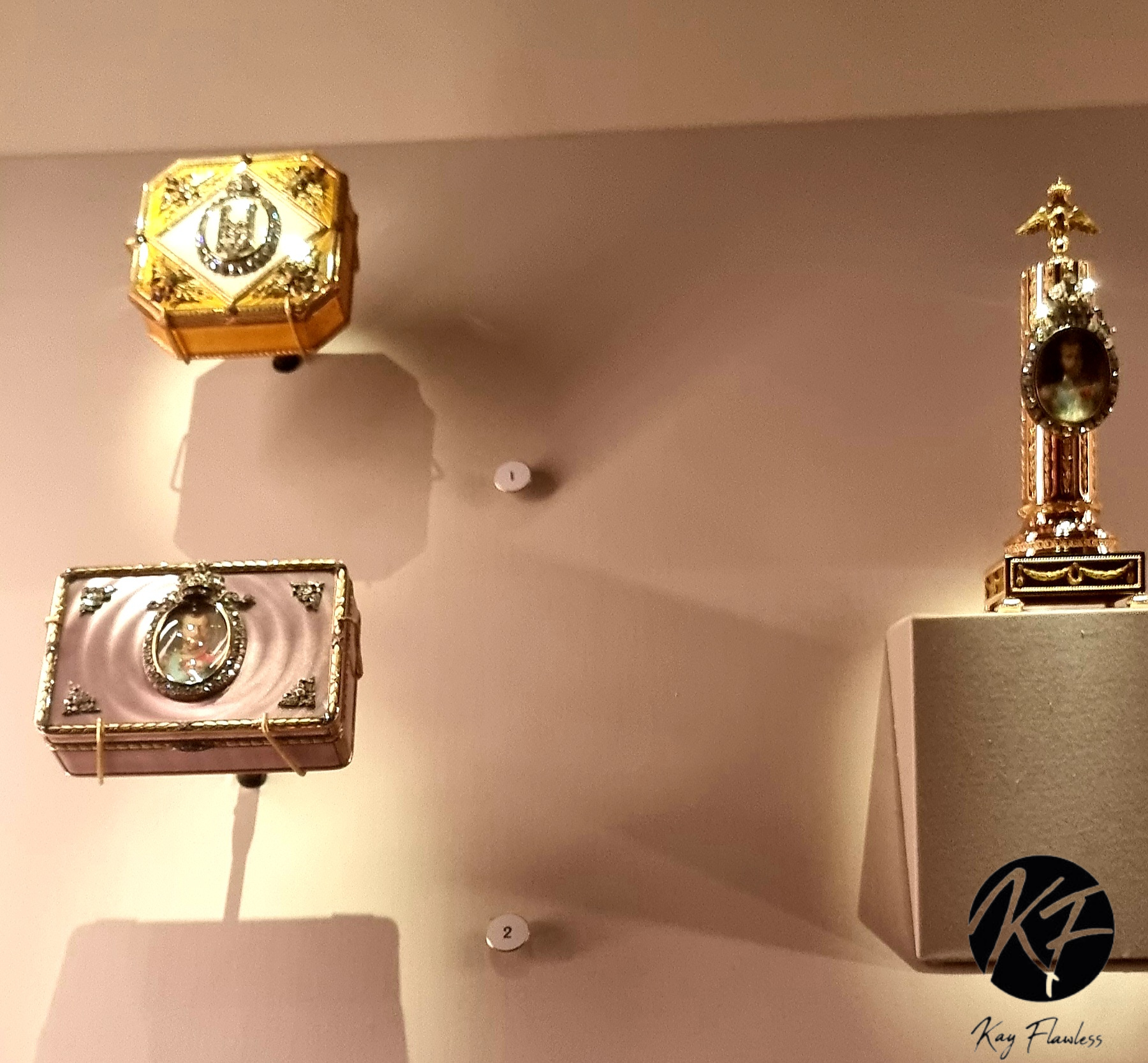
Fabergé’s work is renowned for its exclusivity to the royals and the history behind the very limited pieces that are still here. The exhibition was a truly astounding experience where I had the chance to see a few of the most monumental pieces of artisan work that had been in the hands of the noble and are worth millions.
After we finished at the exhibition, we were in need of a boost so we headed over to the members room to eat. I decided to go with the grilled salmon, tomato and salad, which was delicious. The atmosphere of the member’s room was homely, very quiet and a lovely setting to relax in.
If you are in or around London, up until May 8th, we recommend visiting the exhibition at the Victoria and Albert Museum to see the coveted works of Fabergé in the flesh.

